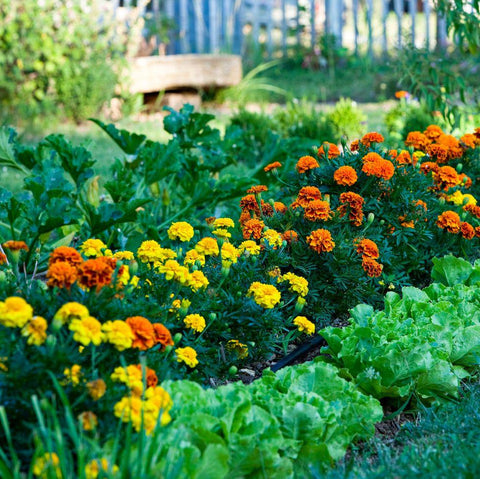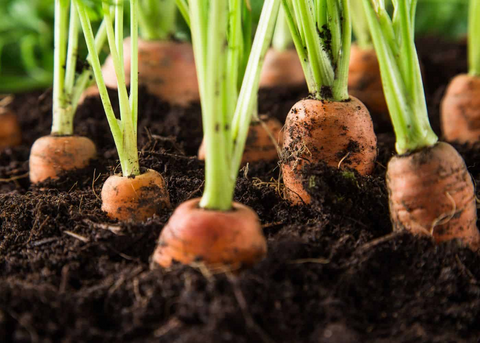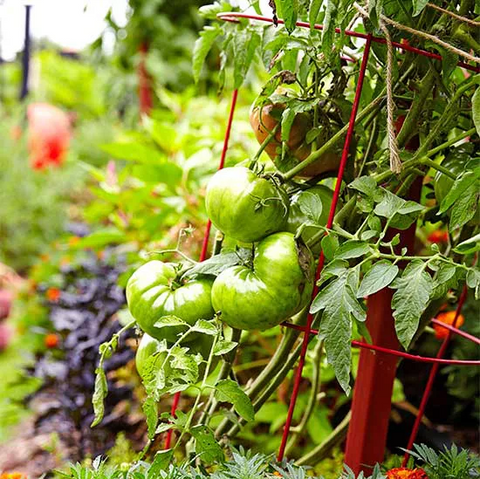In today's world, where water conservation and environmental responsibility are paramount, water-wise gardening has emerged as a beacon of sustainability. Water-wise plants, also known as drought-tolerant or xeriscape plants, offer a remarkable solution for creating lush, eco-friendly home gardens while minimizing water consumption. In this extensive guide, we will immerse ourselves in the world of water-wise plants, delving into their significance, selection, care, and presenting a diverse range of these resilient botanical wonders to elevate your home garden's ecological and aesthetic appeal. The following content also has some reference value for raised garden beds.

Introduction: The Essence of Water-Wise Gardening
The Global Water Predicament
Water scarcity has become a pervasive global issue, affecting ecosystems, communities, and individuals worldwide. Factors like climate change, population growth, and mismanagement of water resources contribute to this challenge. Embracing water-wise gardening is an opportunity to conserve water and address this pressing global concern.
The Beauty and Wisdom of Water-Wise Gardens
Water-wise gardens are more than just ecological choices; they are sanctuaries of beauty and wisdom. These gardens are designed to thrive with minimal water, attract wildlife, and offer a visually enchanting and sustainable landscape.
Choosing the Right Water-Wise Plants
Embracing Natives and Adaptability
Selecting native water-wise plants is a cornerstone of responsible gardening. Native plants are inherently adapted to your region's climate, soil, and water conditions. Look for species that can thrive with minimal irrigation once they've established their roots in your garden.
Understanding Soil and Sunlight Requirements
Before choosing water-wise plants, take time to understand your garden's soil composition and sunlight exposure. Each plant has specific soil and light preferences, so matching these to your garden's conditions is essential for their prosperity.
Crafting a Harmonious Garden Ensemble
A water-wise garden can be a symphony of colors, forms, and textures. Consider a diverse selection of water-wise plants to create a visually captivating and ecologically balanced garden.
Designing Your Water-Wise Haven
Artful Plant Placement
Strategically grouping plants with similar water requirements ensures efficient irrigation and prevents overwatering. Plan your garden layout carefully, taking into account the mature sizes and shapes of your chosen plants.
Implementing Efficient Irrigation Strategies
Utilize water-efficient irrigation methods such as drip irrigation, soaker hoses, or rain barrels. These systems deliver water directly to the plant roots, minimizing water loss through evaporation or runoff.
The Miracle of Mulch
Mulch is a gardener's ally in retaining soil moisture. Apply a layer of organic mulch, such as wood chips or compost, around your plants. This practice not only keeps the soil cool and moist but also suppresses weed growth.
Caring for Your Water-Wise Landscape
Mastering Watering Techniques
While water-wise plants are built to thrive with minimal water once established, they still require consistent watering during their initial growth phase. Water deeply but infrequently to encourage deep root development. Regularly monitor soil moisture levels and adjust your watering schedule as needed.

Nurturing Through Pruning and Maintenance
While many water-wise plants demand minimal pruning, regular maintenance is key to keeping your garden in pristine condition. Deadheading spent flowers and removing damaged or diseased growth promote healthy and vigorous plants.
The Balanced Approach to Fertilization
Water-wise plants often flourish in nutrient-poor soils, requiring less fertilization than high-maintenance counterparts. Apply slow-release or organic fertilizers sparingly to avoid excessive growth and maintain the garden's natural equilibrium.
Exploring a Variety of Water-Wise Plants
Spring's Resplendent Selection
Lavender (Lavandula spp.)
- Fragrant, drought-tolerant perennial.
- Attracts pollinators like bees and butterflies.
- Ideal for aromatic gardens.
California Poppy (Eschscholzia californica)
- Vibrant orange or yellow flowers.
- Self-seeding annual.
- Thrives in well-drained soil.
Summer's Enduring Marvels
Sedum (Sedum spp.)
- Resilient succulent with various colors and textures.
- Perfect for rock gardens or ground cover.
- Thrives in the summer heat.
Russian Sage (Perovskia atriplicifolia)
- Graceful spikes of lavender-blue flowers.
- Drought-tolerant perennial.
- Attracts bees and butterflies.
Fall's Captivating Choices
Mexican Bush Sage (Salvia leucantha)
- Velvety purple or white flowers.
- Drought-tolerant perennial.
- Late-blooming, adds visual interest to the fall garden.
Gaura (Gaura lindheimeri)
- Delicate pink or white flowers.
- Drought-tolerant perennial.
- Imparts an airy quality to the garden.
Winter's Evergreen Delights
Hellebore (Helleborus spp.)
- Known as the Christmas or Lenten rose.
- Early-blooming perennial with a variety of colors.
- Flourishes in partial to full shade.
Yucca (Yucca spp.)
- Evergreen succulent with striking foliage.
- Tolerates cold temperatures and even snow.
- Adds architectural interest to the garden.
Conclusion: The Art of Sustainable Elegance in Your Home Garden
Cultivating a garden filled with diverse water-wise plants is not just a sustainable choice; it's an opportunity to create an elegant and resilient outdoor space. With careful plant selection, thoughtful design, and attentive care, your water-wise garden will not only thrive but also serve as a testament to the beauty and wisdom of sustainable gardening. Embrace the journey of transforming your garden into a sustainable oasis of ecological and aesthetic allure.










